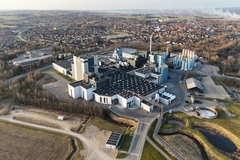
- Industry news
Industry news
- Category news
Category news
- Reports
- Key trends
- Multimedia
Multimedia
- Journal
- Events
- Suppliers
- Home
- Industry news
Industry news
- Category news
Category news
- Reports
- Key trends
- Multimedia
Multimedia
- Events
- Suppliers
New studies shed light on power of whey protein

The findings reported in the Current Opinion in Clinical Nutrition and Metabolic Care suggest that dairy proteins are the optimum vegetarian route to muscle protection and development across all demographic segments.

21 Aug 2009 --- New research suggests we should rethink our understanding of how types of protein affect muscle protein synthesis (MPS) in different people at various stages of their lives. And whey-based protein emerges as a universal top performer.
The findings reported in the Current Opinion in Clinical Nutrition and Metabolic Care suggest that dairy proteins are the optimum vegetarian route to muscle protection and development across all demographic segments (1).
The research demonstrates that although consuming protein is vital to muscle protein synthesis, not all proteins are equally effective in how they are digested and used in the body. Dairy proteins, are found by the researchers to be superior to soy in supporting muscle mass accretion.
Evidence is highlighted showing differences in the responses of MPS, and muscle protein accretion, with ingestion of milk-based and soy-based proteins in young and elderly persons.
Within the dairy category, whey protein appeared to stimulate whole body protein synthesis more effectively than milk casein. The reason suggested for this is that whey is digested quickly and, due to its high leucine content, it is rapidly synthesised by the muscles to be used for growth, recovery and repair.
A separate comparative study recently by Arizona State University published in Nutrition Research Journal suggests that consumption of whey protein has a greater effect on muscle protein accrual in elderly people than consumption of its essential amino acids (EAA) alone (2).
Both whey protein and EAA supplements are known to stimulate muscle growth, but the popular conception is that whey protein’s beneficial effect on muscles is due entirely to its high EAA content. Therefore, the study was designed to compare the efficacy of these two forms of supplementation.
The results showed that muscle protein accrual in older individuals is greater after taking 15g of whey protein than when ingesting only the EAAs found within 15g of whey protein. This suggests that whey protein’s natural effect on the human body is not due entirely to its EAA content alone.
Dr. Naomi Grant, Technical Manager for Dairy & Lifestyle Ingredients at Volac, comments: “These two studies confirm what we know from our own research and customer feedback: the holistic nutritional effect of whey protein is critical, which is why it is important to preserve this nutritional integrity by using state-of-the-art processing methods that are gentle on the protein. This also has implications for those working on food and drink applications using whey protein –the benefits of using the freshest whey protein and the least damaging processing methods are obvious if one is seeking to obtain truly functional food products.”
For food manufacturers, then, the opportunity is clear: whey protein offers a convenient functional ingredient for boosting protein content in vegetarian and healthy eating snack food products as well as protein-fortified functional drinks. Given the high digestive tolerance of whey proteins, they are particularly useful in senior nutrition products; however, since muscle tone and the protection of lean tissues is important to all age groups, the true potential of whey protein is only just starting to be realised.
References:
1 Jason E Tang & Stuart M Phillips, Curr. Opin. Clin. Nutr. Metab. Care, 12: 66-71, Jan 2009.
2 Katsanos, Nutr. Res. 28: 651-658, 2008.










